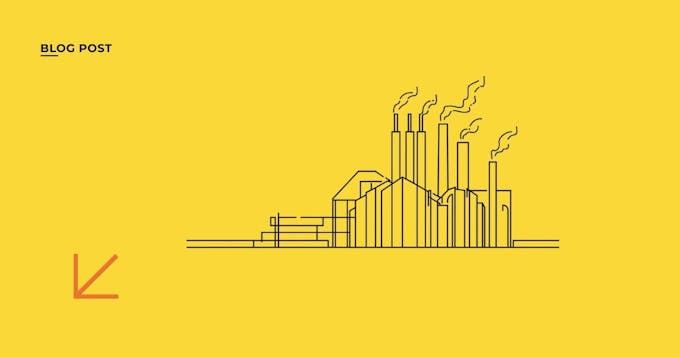Why ERP-Carbon Integration is Essential for Accurate Emissions Tracking
For many organizations, ERP systems are the backbone of material and product data. However, when it comes to carbon emissions reporting, ERP and sustainability tools often operate in silos. This disconnect leads to fragmented data, manual reconciliation, and compliance risks.
With frameworks like the Corporate Sustainability Reporting Directive (CSRD) demanding more granular and auditable emissions data, integrating ERP material codes with carbon models is no longer optional, it’s a strategic necessity.
Elaborating this further, why is it important to bridge this gap?
In today's complex business environment, Enterprise Resource Planning (ERP) systems serve as central repositories for critical material and product information, orchestrating vital operational processes from procurement to manufacturing and distribution. However, a significant challenge arises when organizations attempt to gain a comprehensive understanding of their environmental impact, particularly concerning carbon emissions. Typically, the data held within ERP systems remains isolated from the specialized tools and methodologies used for carbon emissions reporting. This separation creates a critical blind spot, resulting in a fragmented view of environmental performance. The consequence of these data silos is often a cumbersome process characterized by manual data extraction, complex spreadsheet-based reconciliation efforts, and an increased susceptibility to errors and compliance-related risks.
The evolving landscape of sustainability regulations is further amplifying the need for a unified approach. Landmark frameworks such as the Corporate Sustainability Reporting Directive (CSRD) are imposing more stringent demands for detailed and verifiably accurate emissions data across the entire value chain. This necessitates a shift from high-level estimates to granular, product-level carbon accounting. In this context, the integration of ERP material codes with sophisticated carbon modeling capabilities transcends being merely a technological upgrade; it transforms into a fundamental strategic imperative. By establishing a direct link between the foundational product data within the ERP and the environmental impact assessments, organizations can unlock a wealth of benefits, including enhanced accuracy in reporting, streamlined data management processes, improved decision-making regarding sustainable sourcing and product design, and ultimately, a stronger foundation for achieving their sustainability objectives and maintaining regulatory compliance. The ability to trace the carbon footprint of individual materials and products back to their origin within the ERP system provides an unprecedented level of transparency and accountability, crucial for navigating the evolving expectations of stakeholders and building a resilient, sustainable business model.
Key Data Points to Measure for ERP-Carbon Alignment
To achieve seamless ERP-carbon integration, companies should focus on:
- Material-Level Emissions by ERP Code – Associating emissions factors with unique ERP material identifiers.
- Site-Level Variations in Footprint – Capturing emissions differences across production sites.
- Production-Linked Carbon Data – Linking emissions to actual production volumes for real-time accuracy.
These connections enable dynamic product carbon footprinting, essential for CSRD and ESRS compliance.
Challenges in Linking ERP and Carbon Models: A Deeper Dive
Organizations striving for comprehensive carbon accounting and reduction often encounter significant obstacles when attempting to connect their ERP systems with LCA models. These challenges can slow down the accuracy, efficiency, and ultimately the effectiveness of sustainability initiatives.
One of the primary hurdles is manual emissions mapping. The process of associating the numerous materials, components, and processes tracked within an ERP system with corresponding emission factors in a carbon model is often a labor-intensive undertaking. For organizations with extensive and diverse product catalogs, this manual mapping can become exceedingly time-consuming and prone to human error. Inconsistencies in data interpretation and the sheer volume of data involved can lead to inaccuracies that undermine the reliability of the resulting carbon footprint calculations. Furthermore, maintaining the accuracy of these mappings as product portfolios evolve and new materials are introduced requires ongoing effort and vigilance.
Another significant challenge lies in siloed systems and conflicting identifiers. ERP systems and specialized sustainability platforms often operate independently, utilizing disparate data structures and, critically, lacking common identifiers for materials, products, and processes. This absence of universally recognized keys makes it difficult to establish seamless data exchange and linkage between the two types of systems. Different naming conventions, coding schemes, and units of measure can create significant complexities in attempting to correlate information. Bridging these data silos requires significant data manipulation, transformation, and reconciliation, often involving custom integrations or manual data transfers, which introduce further opportunities for errors and inefficiencies.
Finally, the reliance on static LCAs presents a considerable limitation. Traditional lifecycle assessments are often conducted as discrete exercises, providing a snapshot of a product's environmental impact at a specific point in time. These assessments are frequently disconnected from the dynamic, real-time data residing within ERP systems, such as changes in material sourcing, manufacturing processes, or supply chain logistics. Consequently, the emissions insights derived from static LCAs can quickly become outdated and fail to reflect the current environmental performance of products. This disconnect hinders the ability of organizations to make timely and informed decisions regarding emissions reduction strategies and to track the impact of operational changes on their carbon footprint.
According to McKinsey, by 2030, incumbent companies across various industries can, on average, abate 20 to 40 percent of emissions while also reducing their production costs. This reduction is achieved through measures such as energy efficiency improvements, sourcing green energy, and optimizing manufacturing processes. The potential for dual cost and carbon savings varies by industry, but in some sectors, emissions reductions of up to 60 to 80 percent are possible with a favorable business case based on net present value.
This acceleration is a direct result of automating data collection and reducing the manual effort involved in compiling emissions reports. Furthermore, the integration of granular ERP data enhances data accuracy, providing a more reliable and comprehensive understanding of an organization's environmental impact. By breaking down data silos and establishing automated data flows, companies can gain more timely and trustworthy insights, enabling them to drive more effective sustainability initiatives and meet the growing demands for transparent and verifiable environmental reporting.
Strategic Benefits of ERP-Carbon Integration
- Improves Data Consistency and Traceability – Ensures emissions data is linked to actual business operations.
- Enables Seamless Audits and Compliance Reporting – Simplifies CSRD reporting with live, ERP-backed data.
- Supports Product Carbon Footprint Automation – Reduces manual effort and enhances scalability.
This integration lays the foundation for continuous improvement in carbon accounting and strategic decision-making.
Carbmee Custom Properties: Bridging ERP and Carbon Data
With Carbmee’s Custom Properties, companies can create flexible fields that link ERP material codes to emissions data without disrupting existing systems:
- ERP Code Mapping – Assign ERP identifiers to products and materials within the carbon model.
- Product Carbon Intensity – Track emissions intensity per product, reflecting real-time production data.
- Production Region and Site-Level Factors – Capture emissions variations across manufacturing locations.
These properties feed into a centralized emissions model, ensuring accurate, scalable reporting.
Carbontology: Boosting Carbon Footprint Management
Carbmee's innovative Carbontology framework provides a sophisticated and interconnected approach to carbon accounting, seamlessly bridging the gap between your ERP system's granular material data and comprehensive product-level carbon emissions information. By establishing intelligent linkages across emissions factors, detailed lifecycle stages, and evolving regulatory mandates, Carbontology transforms static carbon calculations into dynamic, live models that reflect the ever-changing realities of your business operations.
At its core, Carbontology offers a suite of tangible benefits designed to revolutionize how organizations understand, manage, and report their environmental impact:
- Automated Data Synchronization: When critical material attributes within your ERP system undergo modifications – be it changes in supplier, composition, or manufacturing processes – Carbontology automatically detects and propagates these updates throughout your carbon model. This eliminates the error-prone and time-consuming manual effort typically associated with maintaining accurate emissions data, ensuring your carbon footprint calculations are always based on the latest information.
- Real-Time Production Volume Integration: Carbontology establishes a direct, real-time connection between your production volumes and their corresponding carbon footprints. As production figures fluctuate, your carbon emissions are instantly recalculated, providing an up-to-the-minute view of your environmental performance. This granular insight empowers proactive decision-making and facilitates the identification of carbon hotspots within your production processes.
- Dynamic Scope 3 Emissions Reporting: Leveraging the live data streams from your ERP system and the intelligent linkages within the Carbontology framework, generating accurate and up-to-date Scope 3 emissions reports becomes a seamless process. This capability ensures that your reporting aligns directly with your current business activities, providing stakeholders with a transparent and reliable representation of your extended value chain emissions.
By implementing Carbmee's Carbontology, organizations can fundamentally shift from periodic, retrospective emissions calculations to continuous, forward-looking carbon management. This dynamic approach eliminates the need for cumbersome manual reconciliation processes, significantly reduces the risks associated with regulatory non-compliance due to outdated data, and ultimately empowers businesses to drive meaningful reductions in their environmental footprint.
Steps to Link ERP Data to Carbon Models with Carbmee
- Integrate ERP Material Master Data – Ingest material codes and attributes into the carbon model.
- Define Custom Properties – Map ERP identifiers to emissions factors and lifecycle data.
- Connect Production Volumes – Link ERP production data to calculate product-level emissions.
- Automate Reporting – Use dynamic dashboards for real-time emissions visibility and CSRD compliance.
Book a demo with Carbmee to streamline ERP-carbon integration and automate emissions reporting.
Download the Sustainability Intelligence Report 2025
For best practices on ERP-carbon data alignment, download the Sustainability Intelligence Report 2025.
Conclusion: Make ERP-Linked Carbon Data Your Competitive Advantage
Integrating ERP material codes with carbon models is critical for data accuracy, compliance, and strategic emissions management. With Carbmee, you can:
- Automate product-level emissions tracking.
- Ensure traceable, auditable carbon data.
- Accelerate CSRD and ESRS reporting cycles.
Stop managing emissions data in silos. Link your ERP and carbon intelligence to drive smarter, faster sustainability decisions Carbmee is ready to help.
![[object Object]](https://images.prismic.io/carbmee/aMvtxmGNHVfTPXE7_carbmee_image_reupload_18.jpg?auto=format,compress)



